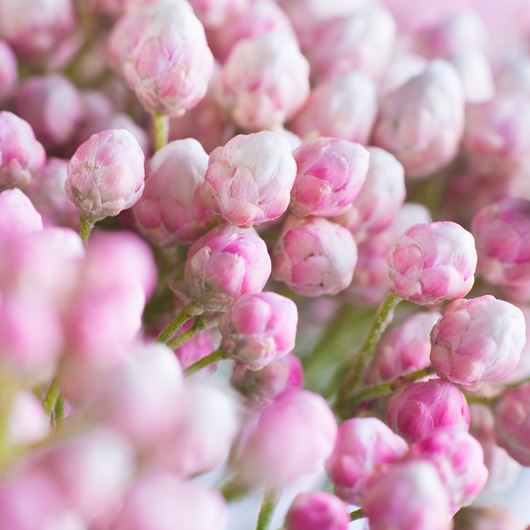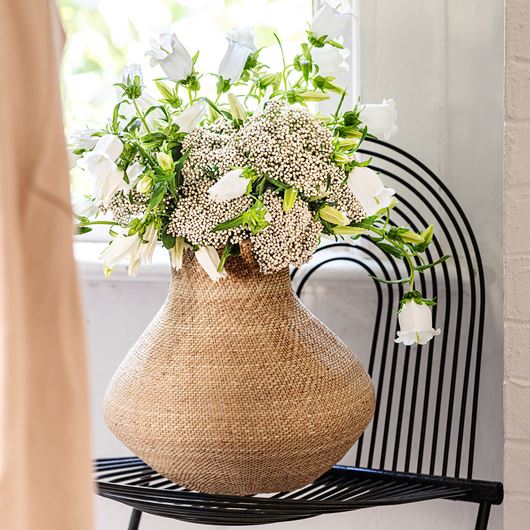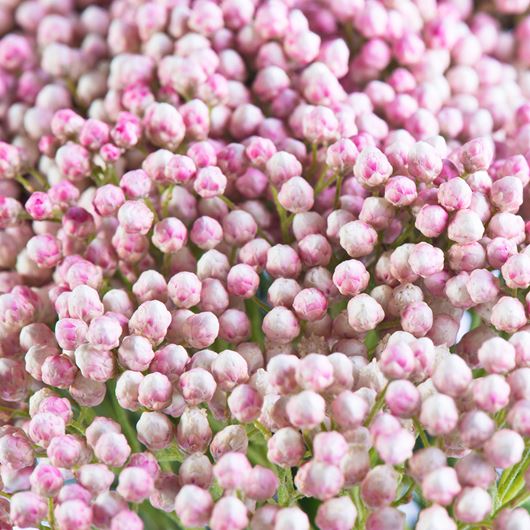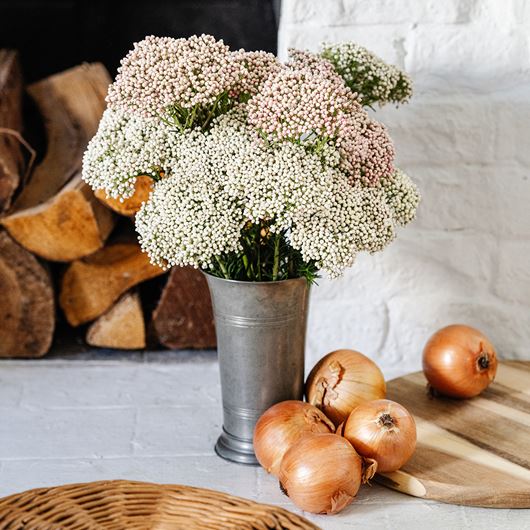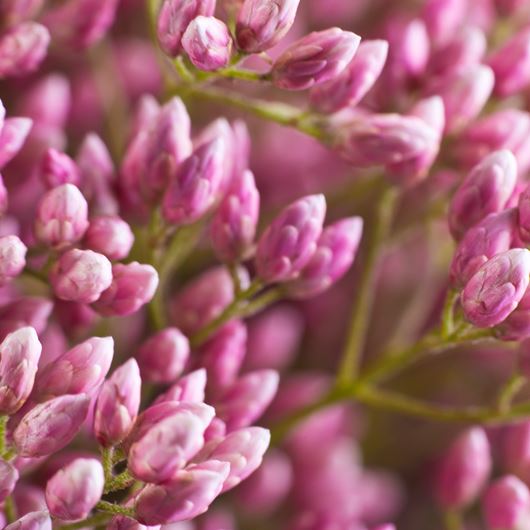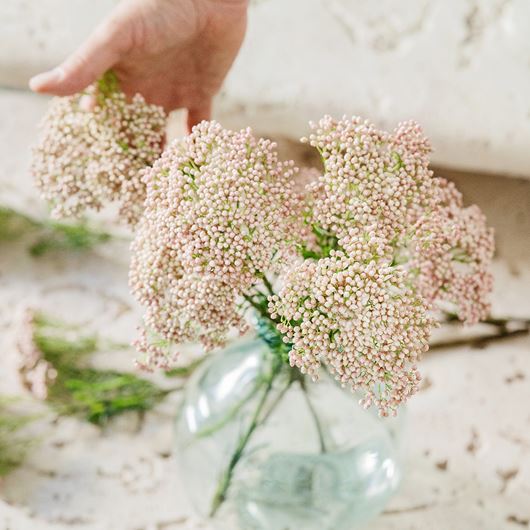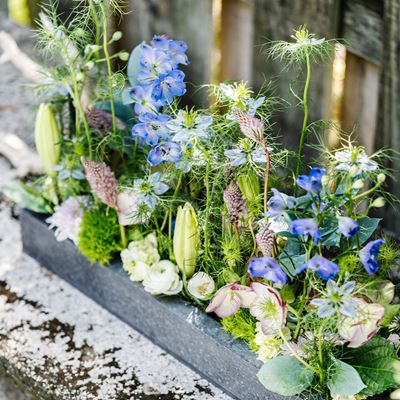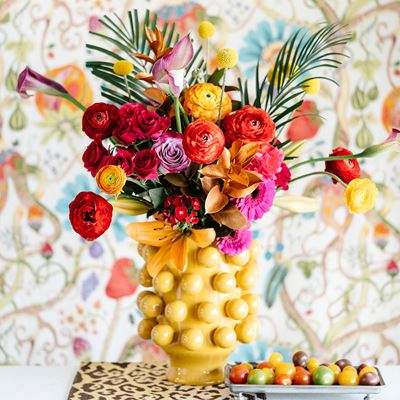Completing our 2023 lookbook series, our sixth and final trend, ATMOSPHERIC, pays homage to our planet's habitats at large. This trending macro view gathers an immersive palette of cool hues, borrowed from the oceans and forests, and pairs it with glowing bright white.
The Australian Native That Stirs the Senses With Its Spicy Fragrance and Everlasting Beauty
Endemic to Australia, rice flower (or sago flower) is a woody shrub prized for its novelty and showy flowering heads. Its most notable feature lies in its blossoms, whose dense, spherical shape resembles the grains of rice commonly used in international cuisines (or thrown over newlywed couples in weddings). Since the times of ancient Greece, the plant has been cherished for its "everlasting beauty," which is likely in reference to its lengthy vase life—especially when dried.
A member of the Asteraceae family, the genus Ozothamnus (formerly Helichrysum) comprises 53 species available as annuals or biennials, 43 of which are native to Australia. The genus name is derived from the Greek words "ozo" (meaning smell) and "thamnos" (meaning bush), as many cultivars are known to produce spicy—and oftentimes unpleasant—fragrances. Most species also originate from mountainous and subalpine regions, and are able to tolerate extreme growing conditions.
Rice flower's woody stems typically grow to 152 cm or taller in height and feature deep green, linear leaves that are usually 1.3 cm long. These leaves are alternate and typically feature a hooked tip. A word of caution here: when crushed, its foliage often produces strong and quite off-putting adors. Dense and globular clusters of 20–100 delicate florets, usually white in color, decorate the stems' tops. Pink cultivars are also available, but they are typically less common.
Rice flower is making its name in the cut flower trade as a popular filler. Similar to Gypsophila and Limonium, rice flower's voluminous shape adds exquisite texture and an ethereal touch to wedding arrangements and everyday designs. And true to its historic uses, rice flower also makes an ideal candidate for drying, given its generous vase life.
FUN FACTS
• The genus Ozothamnus is said to reference the Greek words "ozo" (meaning smell) and "thamnos" (meaning shrub). Rice flower leaves are known for their sharp, aromatic scent. Many species are also said to have flowers that emit a spicy fragrance.
• Rice flower has been cherished by the Greeks for centuries, and they often referred to the plant as "immortelle" (everlasting) because they retain their beauty long after they've been dried.
• Species of the Ozothamnus genus are very similar to those of the genus Helichrysum, but the latter are usually herbs, and not woody plants.
• Of the 53 known species of rice flower, 44 are endemic to Australia.
• As a member of the Asteraceae (daisy) family, rice flower features heads that are made up of small, individual florets. At first glance, they resemble grains of rice.
• Common relatives to rice flower include marigolds, Chrysanthemums, sunflowers and lettuce.
• Rice flower is extremely versatile in floral work, working well as a filler in both fresh and dry arrangements.
